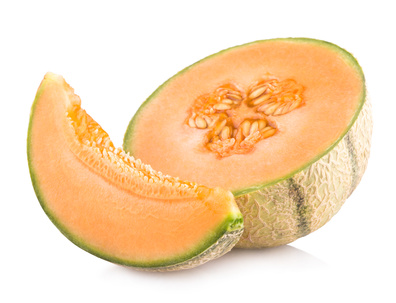
Health Benefits:
Aids in digestion
Aids in weight loss
Anti aging
Anti inflammatory
Improves eyesight
Improves hair skin and nails
Inhibits cancer cell growth
Lowers blood pressure
May reduce risk of cancer
May reduce risk of diabetes
May reduce risk of heart disease
May reduce risk of macular degeneration
May regulate heart rate
Provides energy
Relieves constipation
Nutrition:
One cup of diced melon contains:53 calories, 0.3 grams of fat, 13 grams of total carbohydrate, 12 grams of sugar, 1.4 grams of fiber, 1.3 grams of protein, 106% the daily value for vitamin A, 95% vitamin C, 1% of calcium and 2% of iron
Did You Know?
- The melon that’s most widely recognized as cantaloupe in the U.S. is actually a “reticulated muskmelon.”
- Cantaloupe are members of a vine-crop family known as Cucurbitaceae, which includes other melons, squash, cucumbers, pumpkins, and gourds.
- An average-sized cantaloupe contains just 100 calories.
- Cantaloupe are the most popular melon in the United States!
- Cantaloupe derives its name from the town of Cantalupo, Italy, where cantaloupe seeds arrived from Armenia and were planted in the Papal Gardens in the 16th century.
- Contains Zea-xanthin an important dietary carotenoid
Ways to Eat:
- Raw
- Muddled
- Juiced
- Wrapped in prosciutto
Farming Trivia:
- Cantaloupes best grow during the summer months.
- Cantaloupe tell you when they’re ripe. The vine will naturally slip from the fruit when it’s harvest time. You’ll also notice the skin will turn creamy-beige under the “netted” pattern on the melon.
Note: Always consult a physician for any specific health questions and concerns. Some of this information may be subject to change should there be any new findings from Federal Health Administration (FHA), Food & Drug Administration (FDA), American Medical Association (AMA), American Cancer Society (ACS), and / or other leading food, nutrition and medical advisors.

